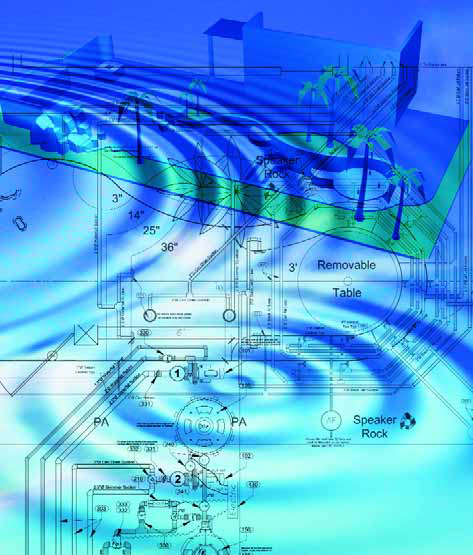vocabulary
It's true for any subject that it's basically impossible to teach and learn about a topic unless there's a shared set of terms that everyone understands and can agree about what they mean. I've thought about that fact a lot in developing a course for university students about watershaping, or what I'm most often calling "water architecture" these days. With watershaping as a subject, that sounds simple enough. After all, we all know the meaning of "swimming pool," "fountain" and "pond." Or do we? I'm not so sure anymore. When I started breaking down our vocabulary for classroom use, I quickly recognized that the meanings of the words we use are anything but clear. Indeed, the more I dug into this seemingly simple phase of curriculum development, the murkier things became.The difficulty I ran into was this: Once I moved past the most rudimentary sets of terms and definitions and looked closely at the language we use to describe what we produce, it became painfully obvious to me that
It's true for any subject that it's basically impossible to teach and learn about a topic unless there's a shared set of terms that everyone understands and can agree about what they mean. I've thought about that fact a lot in developing a course for university students about watershaping, or what I'm most often calling "water architecture" these days. With watershaping as a subject, that sounds simple enough. After all, we all know the meaning of "swimming pool," "fountain" and "pond." Or do we? I'm not so sure anymore. When I started breaking down our vocabulary for classroom use, I quickly recognized that the meanings of the words we use are anything but clear. Indeed, the more I dug into this seemingly simple phase of curriculum development, the murkier things became.The difficulty I ran into was this: Once I moved past the most rudimentary sets of terms and definitions and looked closely at the language we use to describe what we produce, it became painfully obvious to me that
My clients' eyes light up when they first discuss color. They describe intense images of saturated reds, violets, and blues. The more color we can pack in, the better. No one yet has asked me for a garden awash in neutral grays. But what do they really want? As a landshaper, am I delivering the best service by designing a landscape overflowing with pure, vivid colors? As the hired expert, how am I to produce a landscape design that evokes the feeling they really want? That end result - the feeling, or emotional response, that the client gets from the garden - will not necessarily be achieved by placing bright colors everywhere. What we want is a garden that sings, not screams, with color. Of course to design this kind of garden, we designers must understand color ourselves. There is, unfortunately, an abundance of misunderstanding and misinformation on the subject. Let's aim at a more thoughtful understanding of color by approaching it in a logical, sequential manner. Let's explore how color really works, and how to design with color to form compositions that produce the feeling your clients
You don't have to be a football expert to sit in the stands on a nice fall day and watch the locals bash the visitors. But to get the most from the festivities, it helps to know the difference between a two-point conversion and an on-side kick. Being able to converse with your seatmates about the nickel defense and the single-wing offense surging back and forth before your eyes makes it even better. The jargon isn't just for the players and sportscasters. Electricity is a bit like that. Most of us are users, and most of us know some of the jargon despite the fact we don't work at a power plant. We know that we have 12-volt batteries in our cars and that the porch light takes a 60-watt light bulb. And for many folks, that's enough. I believe, however, that those of us who work with things electric on a larger scale can benefit from















